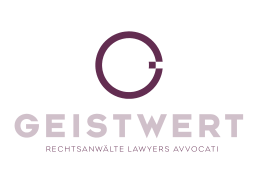Trademarks
In general, trademarks protect signs (words, numbers, graphics, colours, and such), which have been registered with the Trademark Office for certain goods and services. National trademarks exist along with international trademarks and the Community trademark regime.
The right to a trademark is a property right granted by the government for signs which serve the purpose of differentiating products and/or services of their holder from other companies. Austria and the European Union trademark regime follow the “principle of publicity”, i.e. the trademark right arises from the registration in the trademark register at the Austrian Patent Office (AT-trademark) or the European Union Intellectual Property Office EuIPO (Trade Marks and Designs) (Community trademark). Every trademark registration is examined by the Austrian Patent Office respectively the EuIPO with respect to its fulfilment of the formal requirements (in particular, completeness, applicable classification etc.), and with regard to any possible absolute grounds for refusal (in particular lack of distinctiveness, violation of morality (“Sittenwidrigkeit”) or illegality, etc.) The trademark offices do not examine whether a registered trademark conflicts with an older trademark. The do, however, offer “Similarity Protocolls” for one’s own assessment.
The registration is at first valid for ten years. One can, however, extend it for a fee. The registered trademark is published in the Austrian Trademark Bulletin respectively in the Official Journal.
Whereas with regard to a Community trademark, an opposition may be filed by a holder of earlier rights, the Austrian trademark foresees opposition proceedings following the registration. After the opposition period respectively along with it, cancellation proceedings are possible, also for reasons other than earlier rights, e.g. for no genuine use of the trademark in the last five years, if the trademark has been registered for more than those five years.
The Austrian trademark is regulated in the Austrian Trademark Protection Law (MSchG) and the Community trademark in the EU Trademark Regulation.
The Austrian as well as the EU Trademark Law confers on its holder an exclusion right. The holder of the trademark can therefore prohibit others from using the trademark or similar signs for those goods or services, for which the trademark is registered (or similar goods or services). In the case of “well-known brands”, the similarity of the goods or services is irrelevant, but circumstances involving breaches of integrity would have to be present. The use of a trademark to designate goods or services includes: (a) affixing the sign to the goods or to the packaging thereof, or to objects in respect of which the service is, or is intended to be, provided, (b) offering the goods, or putting them on the market or stocking them for those purposes under that sign, or offering or supplying services thereunder, (c) importing or exporting the goods under the sign, (d) using the sign on business papers and announcements, and in advertising.
In case of breach, the holder of rights may demand, in particular, the cessation of the infringing use, the removal thereof, reasonable compensation or in the case of negligence, damages, each including financial statements, publication of the judgement and information about the origin and distribution channel. The cessation, but also the preserving of evidence (“house search under civil law”) or the ability to pay (“freezing of assets”) can be enforced through a preliminary injunction. An intentional trademark infringement is also a criminal offence.
